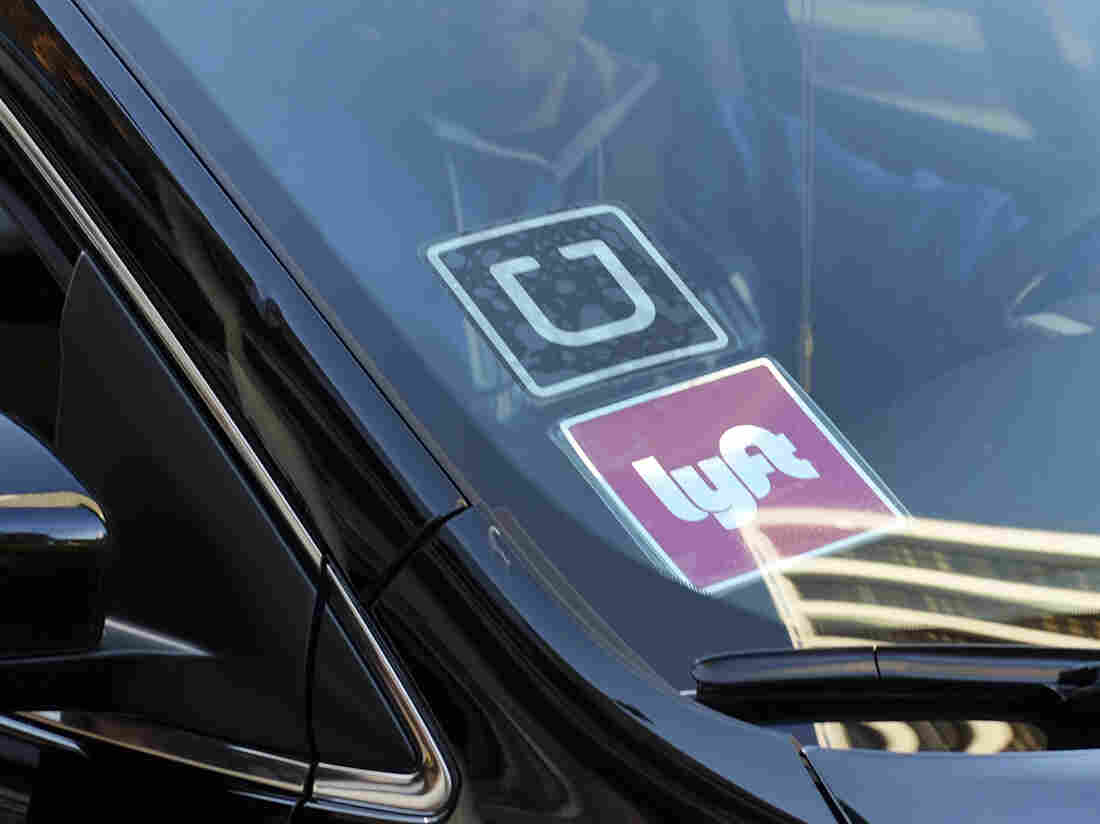
Stocks quickly trimmed early losses Wednesday, as concerns eased over an escalating China trade war. Meanwhile earnings news sent a number of stocks — including Match Group (MTCH), Avalara (AVLR) and Electronic Arts (EA) — sharply higher.
XThe Nasdaq dropped 0.4%, then narrowed losses and was toggling in and out of narrow gains. The S&P 500 cut its decline to a fraction. The Dow Jones industrials traded almost level, just below the index's 50-day moving average.
Tuesday's after-hours reporting session sent Electronic Arts and IBD Leaderboard stock Match Group up sharply after their reports. 2U Inc. (TWOU) and 3D Systems (DDD) posted double-digit declines. The closely watched first public report from Lyft (LYFT) was mixed, holding the stock to a 0.5% advance in early trade. Cloud-based IPO Avalara (AVLR) rocketed after its report late Tuesday.
Wednesday's earnings reports triggered strong early gains by Siemens (SIEGY) and Bunge Group (BG). TripAdvisor (TRIP) fell 7%.
Chip stocks were mixed, with Qorvo (QRVO) and Macom Technology (MTSI) soaring on earnings results, while Microchip Technology (MCHP) took a hard early hit following a soft fiscal first-quarter outlook.
Beyond Meat (BYND), also an IBD Leaderboard name, traded more than 3% higher.
China trade-sensitive Walmart (WMT) fell 1.2%, the worst loss among Dow Jones stocks. Dow Jones peer Merck (MRK) gained 0.4% after announcing positive clinical trial results.
Microchip and China's Netease (NTES) sunk to the bottom of the Nasdaq. Electronic Arts topped the Nasdaq 100 and S&P 500 indexes.
Earnings News: Match Group, Electronic Arts
IBD Leaderboard stock Match Group grabbed an early 7% gain, moving beyond buy range after the open. The stock ended Tuesday in a buy range, just above a 60.02 cup-with-handle buy point.
A 28% earnings jump and a 14% rise in revenue both topped analyst estimates for Match. Subscriber growth for its Tinder dating app also topped forecasts.
Video game pioneer Electronic Arts rallied nearly 5% after reporting big revenue and earnings beats in its fiscal fourth quarter. The company's outlook was mixed, however, with first-quarter earnings and revenue guidance well below analyst targets, while full-year earnings were far above expectations. The stock is not near a buy point, but it is positioned for a test of resistance at its converged 10- and 40-week moving averages — which have halted the stock's progress since August.
China Trade War: Nets Broken?
Trade negotiators plan to launch back into efforts on Thursday to end the U.S.-China trade war. China's chief trade official, Vice-Premier Liu He, is in Washington to lead China's side of the talks. Unlike a week ago, hopes are not high. Although news reports early Wednesday quoted President Donald Trump saying that Chinese negotiators told the White House they intended to make a deal on trade. The Trump administration has committed to a tariff increase on Friday if China shows no flexibility. China's state media, meanwhile, reports Beijing has reached its limit on concessions, and is prepared for increased tariffs.
One expert quoted by the South China Morning Post Wednesday said China has dug in at its current level of concessions, and increased tariffs will encourage no further compromises, only deteriorated negotiations. "It will be a situation where fishes are dead and nets are broken," said Liu Weidong, a U.S. affairs expert at the Chinese Academy of Social Sciences.
China markets took heavy losses Wednesday, with the Shanghai Composite down 1.1% and Hong Kong's Hang Seng Index dropping 1.2%. Japan succumbed to the mood as safe-haven trading drove the yen higher, with Tokyo's Nikkei 225 down 1.5% and breaking below key levels of support.
In Europe, markets turned mixed in afternoon trade. London's FTSE 100 slipped 0.2%. The CAC-40 in Paris shed its losses and gained 0.1%. Frankfurt's DAX also reversed early losses, rising 0.4% in late trade.
Dow Jones Snaps Support, Faces Test
Despite some bullish signals on Monday, the Dow Jones Industrial Average on Tuesday sliced below its 50-day moving average. Whereas the index edged ever closer to its first new high since October, it now faces the task of retaking support at its 50-day line. A look at a daily or weekly chart shows that line acting as a level of resistance for the index, stalling rally attempts in November and December.
The S&P 500 found support at its 50-day line Tuesday, while the Nasdaq remained well above the line. But the Nasdaq now has declined in five of the past six sessions. The index staged a similar, five-day pullback in March, after the European Central Bank pointed to a weaker economic outlook. That pullback broke support at the index's 200-day line, then reversed as the Nasdaq ran 10.4% higher over the next eight weeks.
For more detailed analysis of the current stock market and the status of its uptrend, study the Big Picture.
IPO Watch: Avalar, Beyond Meat Surge
Aside from Lyft, early IPO action was mixed, with Avalara scorching 23% higher and Beyond Meat (BYND) up almost 7% in early trade. Zoom Video (ZM) gained 4%, while Zscaler (ZS) added 1.3%. Jumia Technologies (JMIA) slipped 2%.
Avalara spiked to fresh highs, clearing its post-IPO watermarks from June. Shares are up now up 73% since clearing an IPO base in January, and trading 207% above their initial offering price. The automated tax-program software developer reported a loss of 1 cent per share, vs. views for a 16-cent loss. Revenue surged a stronger-than-expected 38%, and second-quarter revenue guidance was above analyst forecasts.
Find Alan R. Elliott on Twitter @IBD_Aelliott
YOU ALSO MIGHT LIKE:
The Big Picture: Stock Market Looks To These Key Signals Next
China Trade Talks Face Do-Or-Die Moment
10 Stocks Face Big Problem In Trump China Trade War
Best Growth Stocks To Buy And Watch: See Updates To IBD Stock Lists
IBD Digital: Unlock IBD's Premium Stock Lists, Tools And Analysis Today
https://www.investors.com/market-trend/stock-market-today/stock-futures-slip-on-china-trade-war-dow-jones-stocks/
2019-05-08 12:22:30Z
52780289344763


/arc-anglerfish-syd-prod-nzme.s3.amazonaws.com/public/JLOVCAZHM5H43ALU7VLZRFHRQ4.jpg)
/arc-anglerfish-syd-prod-nzme.s3.amazonaws.com/public/2QRVZDPUVVFL5IHKQ4MJYAKXOA.jpg)
